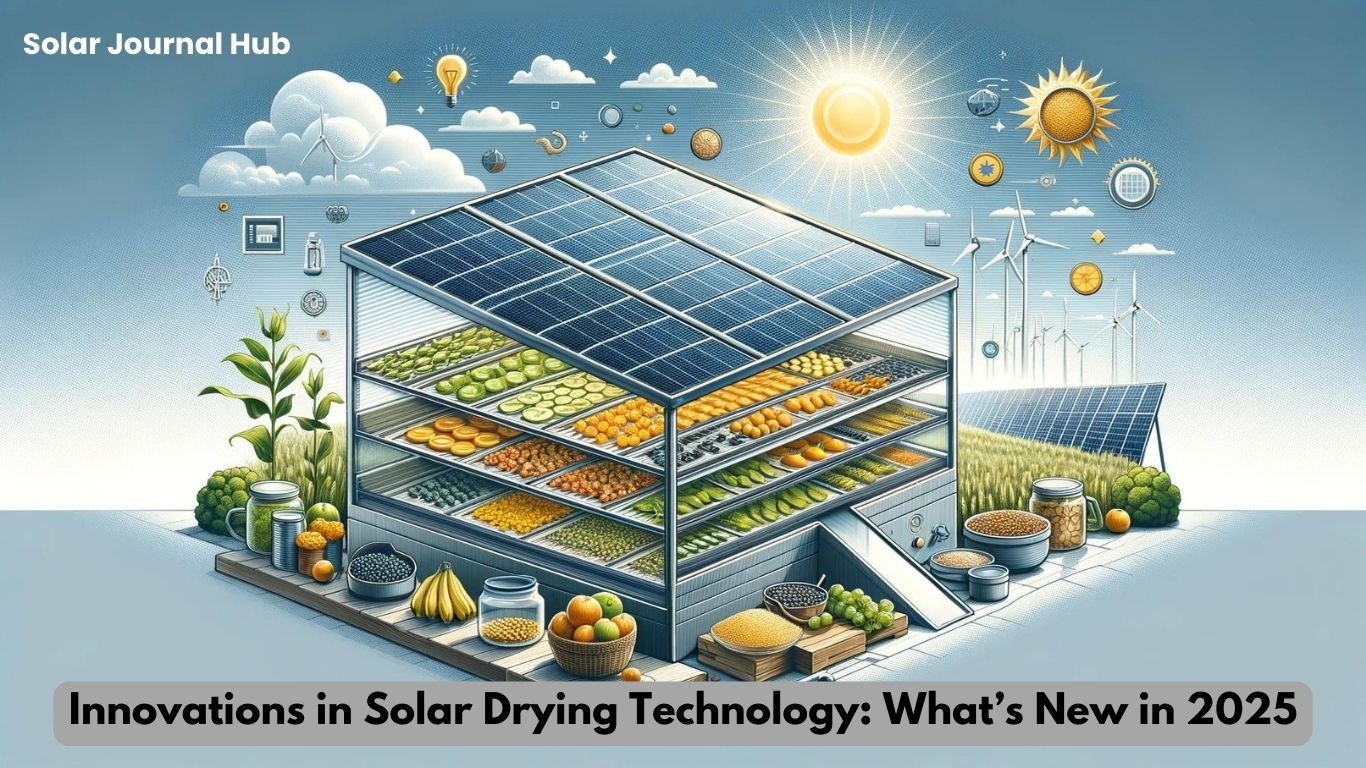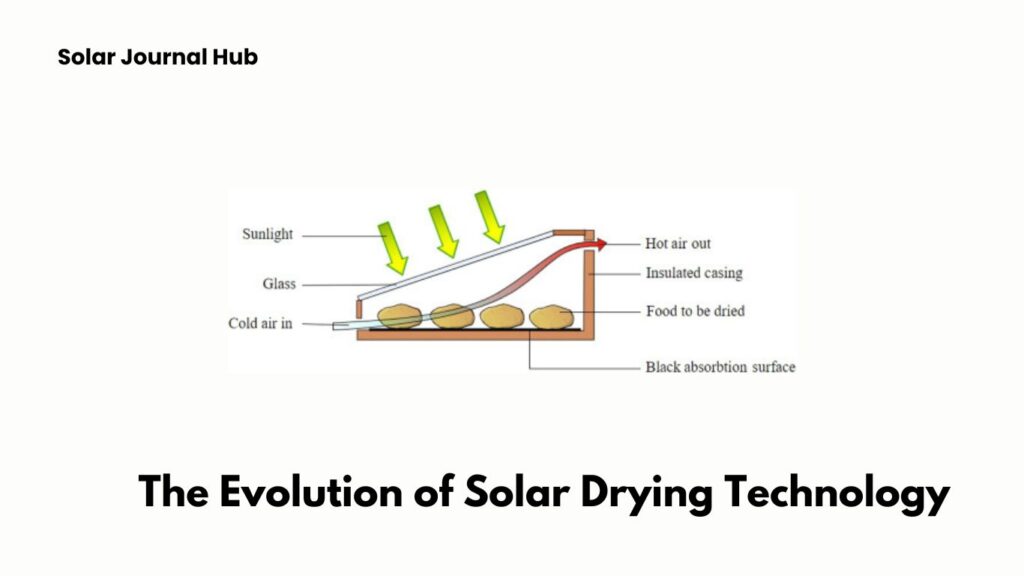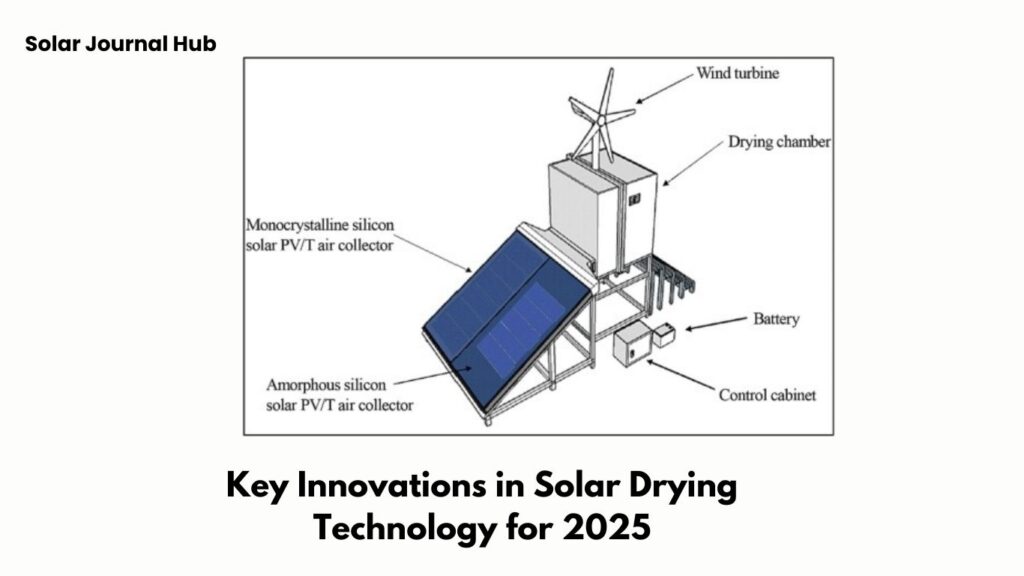/ Dec 19, 2025

Solar drying technology has become a critical component in various industries, particularly agriculture and food processing, where efficient and sustainable drying methods are essential. With advancements in renewable energy solutions, solar drying has transformed from rudimentary setups to highly sophisticated systems. In 2025, innovations in solar drying technology promise to make the process more efficient, accessible, and environmentally friendly. This article explores the latest breakthroughs, their applications, and the future of solar drying.
The concept of solar drying has existed for centuries, primarily in its most basic form. Traditional methods involved spreading crops under the sun, relying entirely on natural heat and airflow. While effective to an extent, these methods had significant drawbacks, including contamination, uneven drying, and weather dependency.
As industries demanded higher efficiency and hygiene standards, solar drying evolved. Basic solar dryers, equipped with transparent covers and ventilation systems, emerged in the mid-20th century. Over time, the integration of advanced materials and design techniques led to the development of more reliable and efficient systems, laying the groundwork for today’s innovations.

One of the most significant innovations in 2025 is the use of advanced materials that enhance the efficiency of solar dryers. These include:
Hybrid solar dryers are becoming increasingly popular in 2025. These systems combine solar energy with auxiliary energy sources such as electricity, biomass, or gas, ensuring continuous operation even during cloudy days or at night. Hybrid dryers are particularly beneficial in regions with inconsistent sunlight, making them a reliable option for year-round drying.
The integration of smart technologies has revolutionized solar drying. Smart solar dryers equipped with IoT (Internet of Things) sensors enable real-time monitoring and control of drying parameters such as temperature, humidity, and airflow. Users can manage these systems remotely through mobile applications, ensuring precise drying and reducing manual intervention.
Modular solar dryers are designed to be portable and customizable, catering to both small-scale and industrial users. These dryers can be easily assembled, disassembled, and expanded based on user requirements. Their flexibility makes them suitable for a variety of applications, from small farms to large processing units.
Sustainability remains a key focus in 2025. Solar dryers are now constructed using recycled and biodegradable materials, reducing their environmental impact. Energy-efficient designs further contribute to lowering carbon footprints, aligning with global goals for sustainability.

Solar drying plays a crucial role in preserving agricultural produce. Farmers use these systems to dry fruits, vegetables, grains, and herbs, extending their shelf life and preventing post-harvest losses. Innovations in solar drying technology have made it easier for small-scale farmers to access efficient and affordable drying solutions.
In industries such as textiles, paper manufacturing, and pharmaceuticals, solar drying is increasingly being adopted for its cost-effectiveness and environmental benefits. The ability to handle large-scale drying processes with minimal energy consumption makes solar dryers a valuable asset for these industries.
Solar dryers have a significant impact on rural communities, empowering them with affordable and sustainable drying solutions. These systems enable small businesses to produce high-quality dried products, improving livelihoods and fostering economic growth.
Advanced materials, hybrid systems, and smart technologies significantly improve drying efficiency, reducing drying times and enhancing productivity.
By utilizing renewable energy, solar dryers lower operational costs compared to conventional drying methods. Hybrid systems further reduce dependency on expensive energy sources.
Solar drying aligns with global sustainability goals by reducing reliance on fossil fuels and minimizing greenhouse gas emissions.
Modular designs and sustainable models make solar dryers accessible to a broader audience, including small-scale farmers and entrepreneurs in remote areas.
In India, small-scale farmers have adopted modular solar dryers to preserve fruits and vegetables. These dryers have significantly reduced post-harvest losses and increased income by enabling farmers to sell dried produce during off-seasons.
A textile manufacturer in Southeast Asia integrated hybrid solar dryers into their production process. The result was a 30% reduction in energy costs and improved drying efficiency, showcasing the potential of solar drying in industrial settings.
Looking ahead, solar drying technology is poised for further advancements:
Innovations in solar drying technology are transforming the way industries and communities preserve and process goods. From advanced materials and hybrid systems to smart technologies and modular designs, these developments promise to make solar drying more efficient, accessible, and environmentally friendly. As we move toward a sustainable future, solar drying will undoubtedly play a crucial role in achieving global goals for renewable energy and resource conservation.
Solar drying technology uses sunlight to remove moisture from products like food, textiles, or chemicals. It involves collecting solar energy through panels or chambers to heat and dry items in an eco-friendly and energy-efficient manner.
Yes, innovative designs allow integration with wind or biomass energy systems, enhancing their overall sustainability and efficiency.
The cost of a solar dryer varies depending on its size, type, and features. Small household solar dryers can range from $100 to $500, while larger commercial or industrial models can cost $2,000 to $20,000 or more.

Solar drying technology has become a critical component in various industries, particularly agriculture and food processing, where efficient and sustainable drying methods are essential. With advancements in renewable energy solutions, solar drying has transformed from rudimentary setups to highly sophisticated systems. In 2025, innovations in solar drying technology promise to make the process more efficient, accessible, and environmentally friendly. This article explores the latest breakthroughs, their applications, and the future of solar drying.
The concept of solar drying has existed for centuries, primarily in its most basic form. Traditional methods involved spreading crops under the sun, relying entirely on natural heat and airflow. While effective to an extent, these methods had significant drawbacks, including contamination, uneven drying, and weather dependency.
As industries demanded higher efficiency and hygiene standards, solar drying evolved. Basic solar dryers, equipped with transparent covers and ventilation systems, emerged in the mid-20th century. Over time, the integration of advanced materials and design techniques led to the development of more reliable and efficient systems, laying the groundwork for today’s innovations.

One of the most significant innovations in 2025 is the use of advanced materials that enhance the efficiency of solar dryers. These include:
Hybrid solar dryers are becoming increasingly popular in 2025. These systems combine solar energy with auxiliary energy sources such as electricity, biomass, or gas, ensuring continuous operation even during cloudy days or at night. Hybrid dryers are particularly beneficial in regions with inconsistent sunlight, making them a reliable option for year-round drying.
The integration of smart technologies has revolutionized solar drying. Smart solar dryers equipped with IoT (Internet of Things) sensors enable real-time monitoring and control of drying parameters such as temperature, humidity, and airflow. Users can manage these systems remotely through mobile applications, ensuring precise drying and reducing manual intervention.
Modular solar dryers are designed to be portable and customizable, catering to both small-scale and industrial users. These dryers can be easily assembled, disassembled, and expanded based on user requirements. Their flexibility makes them suitable for a variety of applications, from small farms to large processing units.
Sustainability remains a key focus in 2025. Solar dryers are now constructed using recycled and biodegradable materials, reducing their environmental impact. Energy-efficient designs further contribute to lowering carbon footprints, aligning with global goals for sustainability.

Solar drying plays a crucial role in preserving agricultural produce. Farmers use these systems to dry fruits, vegetables, grains, and herbs, extending their shelf life and preventing post-harvest losses. Innovations in solar drying technology have made it easier for small-scale farmers to access efficient and affordable drying solutions.
In industries such as textiles, paper manufacturing, and pharmaceuticals, solar drying is increasingly being adopted for its cost-effectiveness and environmental benefits. The ability to handle large-scale drying processes with minimal energy consumption makes solar dryers a valuable asset for these industries.
Solar dryers have a significant impact on rural communities, empowering them with affordable and sustainable drying solutions. These systems enable small businesses to produce high-quality dried products, improving livelihoods and fostering economic growth.
Advanced materials, hybrid systems, and smart technologies significantly improve drying efficiency, reducing drying times and enhancing productivity.
By utilizing renewable energy, solar dryers lower operational costs compared to conventional drying methods. Hybrid systems further reduce dependency on expensive energy sources.
Solar drying aligns with global sustainability goals by reducing reliance on fossil fuels and minimizing greenhouse gas emissions.
Modular designs and sustainable models make solar dryers accessible to a broader audience, including small-scale farmers and entrepreneurs in remote areas.
In India, small-scale farmers have adopted modular solar dryers to preserve fruits and vegetables. These dryers have significantly reduced post-harvest losses and increased income by enabling farmers to sell dried produce during off-seasons.
A textile manufacturer in Southeast Asia integrated hybrid solar dryers into their production process. The result was a 30% reduction in energy costs and improved drying efficiency, showcasing the potential of solar drying in industrial settings.
Looking ahead, solar drying technology is poised for further advancements:
Innovations in solar drying technology are transforming the way industries and communities preserve and process goods. From advanced materials and hybrid systems to smart technologies and modular designs, these developments promise to make solar drying more efficient, accessible, and environmentally friendly. As we move toward a sustainable future, solar drying will undoubtedly play a crucial role in achieving global goals for renewable energy and resource conservation.
Solar drying technology uses sunlight to remove moisture from products like food, textiles, or chemicals. It involves collecting solar energy through panels or chambers to heat and dry items in an eco-friendly and energy-efficient manner.
Yes, innovative designs allow integration with wind or biomass energy systems, enhancing their overall sustainability and efficiency.
The cost of a solar dryer varies depending on its size, type, and features. Small household solar dryers can range from $100 to $500, while larger commercial or industrial models can cost $2,000 to $20,000 or more.
Copyright Solar Journal Hub. 2025